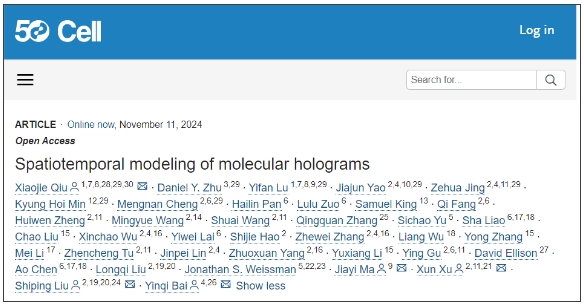On Beijing time November 12, Yao Jiajun, one of the first dispatch of Shenzhen Huada Research Institute of Life Sciences Innovation Undergraduate Class graduates, from the School of Life Sciences, he published an online paper entitled Spatiotemporal modeling of Spatiotemporal modeling of molecular holograms as a co-first author in the top international biology journal Cell, with Northwest University as the co-first author organization, during his joint training period at Shenzhen Huada Institute of Life Sciences when pursuing a BA degree.
The paper is a collaborative research by the Shenzhen Huada Research Institute of Life Sciences, in collaboration with School of Medicine of Stanford University and other institutions. Drawing on mathematical models from multiple interdisciplinary fields such as physics, geography, economics, etc., the paper pioneered the development of Spateo, a 3D spatiotemporal modeling toolkit, which enables spatial transcriptomics technology to finely reconstruct the 3D structure of organs and systematically quantify spatiotemporal dynamical processes. The release of this toolkit marks a revolutionary breakthrough in spatiotemporal genomics research, which can comprehensively support research in the fields of embryonic development, brain science, and diseases, and is an extremely critical step towards realizing high-precision spatiotemporal life-wide landscape research.
In this achievement, Yao Jiajun and his research team developed a 3D spatiotemporal modeling framework for Spateo and successfully applied it to 3D mouse embryogenesis mapping of E9.5 and E11.5, capturing data from up to 8 million cells and providing a valuable resource for embryonic development research. Yao Jiajun was responsible for 3D model generation, morphometric and volumetric analysis, morphological skeleton construction, morphogenesis prediction, and development of the Spateo-viewer visualization tool in this study.
